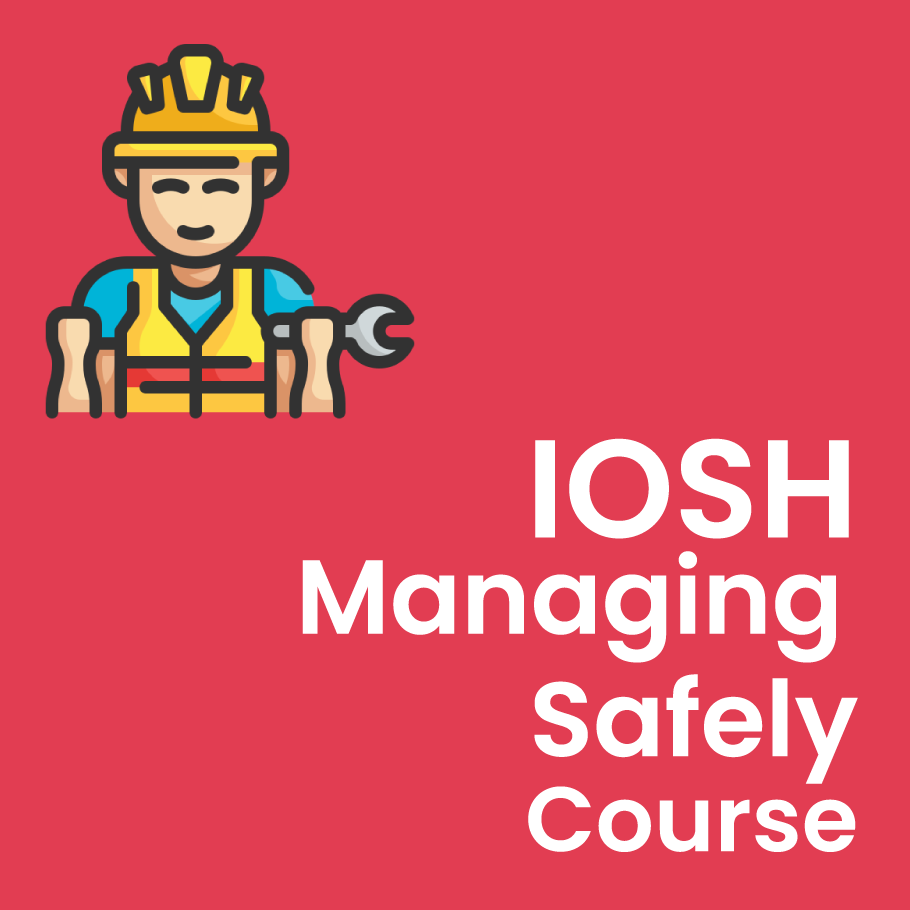Are you seeking to enhance your understanding of workplace safety, bolster your problem-solving skills, and boost your career prospects in the Gulf? Look no further. IIPD Global proudly presents the IOSH Managing Safely course, a comprehensive program designed to equip you with the knowledge and expertise to navigate the complex world of occupational safety and health.
Why IOSH Managing Safely at IIPD Global?
At IIPD Global, we understand the unique challenges faced by individuals and organizations in Gulf when it comes to safety management. Our IOSH Managing Safely course is tailored to address these challenges, providing you with a specialized approach to safety management that is relevant to the local business landscape.

Course Contents
Keep scrolling to learn more about the comprehensive IOSH Managing Safely course and how it can equip you with the knowledge and skills to become a safety leader in your industry. Whether you're a seasoned safety professional or just starting your journey in safety management, this course has something valuable to offer.
Module one: Introducing managing safely
- The three key reasons – moral, legal, and financial – for managing safely
- Manager responsibility and accountability for safety and health in the workplace
Module two: Assessing risks
- Content Learning outcome number
- Definitions of the terms ‘hazard’, ‘hazardous event’, and ‘risk’
- Definition of the term ‘risk assessment’
- Definition of the terms ‘likelihood’ and ‘consequence’
- Risk assessment process and risk rating systems
- The benefits of carrying out risk assessment
Module three: Controlling risks
- Content Learning outcome number
- Definition of the term ‘reasonably practicable’
- How to evaluate risk using a risk matrix and how to control those risks
- How to reduce risk by applying the ‘hierarchy of risk control’
- How implementing risk controls can have an impact on the likelihood of an incident, the consequences of an incident, or both
- Definition of the term ‘residual risk’
- Modules two and three should include a practical activity to spot hazards, and assess and control risk
Module four: Understanding responsibilities
- An overview of what the law requires an organization to do to protect the safety and health of workers and other people under its control
- Definition of the term ‘reasonably foreseeable’
- The three knowledge tests to help determine ‘reasonably foreseeable’ risks: common, industry and expert knowledge
- The difference between criminal law and civil law in relation to safety and health
- The possible outcomes of not working within the law
- Where to find help and guidance for working within the law
- The key parts, and the elements of each part, of a health and safety management system
- The key benefits of introducing a health and safety management system
- Why leadership is an essential part of a health and safety management system
- The three essential principles for good safety and health performance
Module five: Understanding hazards
The six main hazard categories and how hazards can fall into more than one group:
- Mechanical
- Physical
- Chemical
- Environmental
- Biological
- Organizational
Common hazards in the workplace, their effects and symptoms, and how to manage them. Hazards covered are:
- Aggression and violence
- Asbestos
- Bullying
- Chemicals and harmful substances
- Computer workstations
- Confined spaces
- Drugs and alcohol
- Electricity
- Fire
- Getting in and out
- Heights
- Housekeeping
- Lighting
- Manual handling
- Noise
- Plant and machinery
- Radiation
- Slips and trips
- Stress
- Temperature
- Vehicles and transport
- Vibration
- Any other relevant hazards
Module six: Investigating incidents
- Definition of the terms ‘incident’, ‘accident’, and ‘near miss’
- Reasons to Investigate Incidents
- The benefits of incident investigation
- Definition of the terms ‘immediate’, ‘underlying’, and ‘root’ causes in relation to incidents
- The actions to be taken following an incident
- Incident reporting
- The stages of a structured approach to incident investigation
Module seven: Measuring performance
- Content Learning outcome number
- What types of information performance indicators can give to help
- improve safety and health in the workplace
- The characteristics of good key performance indicators
- The differences between ‘proactive’ and ‘reactive’ performance indicators
- What is meant by ‘auditing’
- The two types of auditing: internal and external
- Types of evidence used in an audit

Assessing learners
Based on the learning objectives, all learners should be assessed in two ways:
| Content | Learning Outcome Number |
| 1. Knowledge and comprehension Learners are required to use one of the four standard assessments under examination conditions, which consist of 30 questions in a variety of formats that can be achieved within 45 minutes. Each paper has a maximum of 60 marks. | All |
| 2. Practical application of learning Learners are required to complete a workplace risk assessment using either the standard IOSH form or their own organization’s form. This is to be completed within two weeks of the end of the course. The project must be marked using the IOSH criteria and have a maximum of 38 marks. | 4 |
Pass marks
Knowledge Practical application Minimum mark required for each section 36/60 23/38 Minimum overall mark required 60
| Knowledge | Practical application | |
| Minimum mark required for each section | 36/60 | 23/38 |
| Minimum overall mark required | 60 | |
How Does IOSH Managing Safely Help You?
Our course will help you:
Boost Career Prospects: In a competitive job market, having an internationally recognized qualification like IOSH Managing Safely can set you apart and open doors to a wider range of career opportunities.
Enhance Workplace Safety: By applying the principles learned in our course, you can proactively create a safer working environment, reduce accidents, and protect the well-being of your colleagues.
Meet Legal Requirements: Dubai has stringent safety regulations. Our course ensures you have the knowledge to keep your organization compliant with local and international safety standards.
Problem-Solving Mastery: We understand that addressing safety issues requires effective problem-solving. Our course equips you with the tools to analyze and solve safety challenges efficiently.
Don't miss the opportunity to elevate your career and make your workplace safer. Join us at IIPD Global Dubai for the IOSH Managing Safely course. Register today and be on your way to becoming a safety leader in your industry. Your safety journey begins here!



